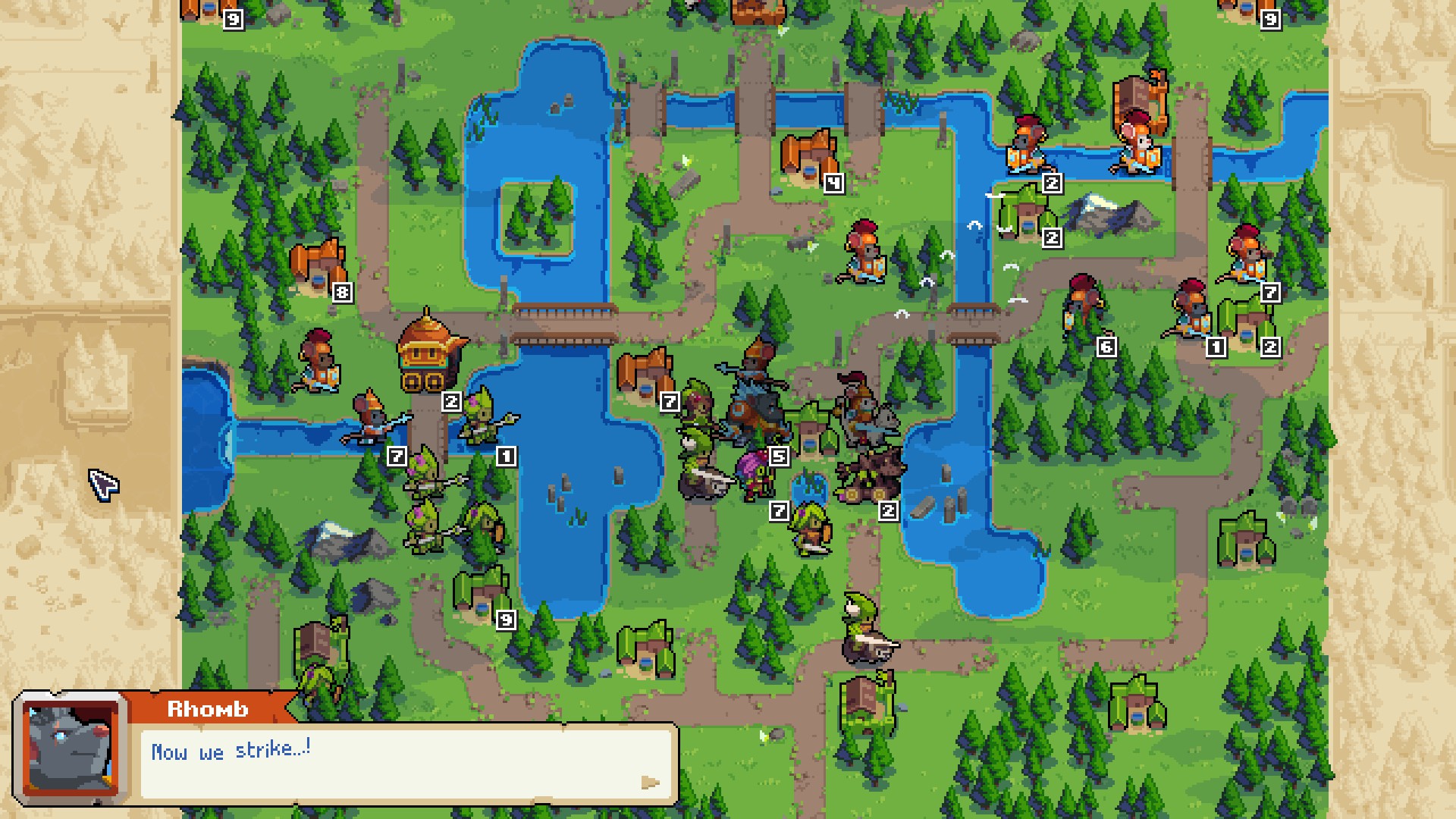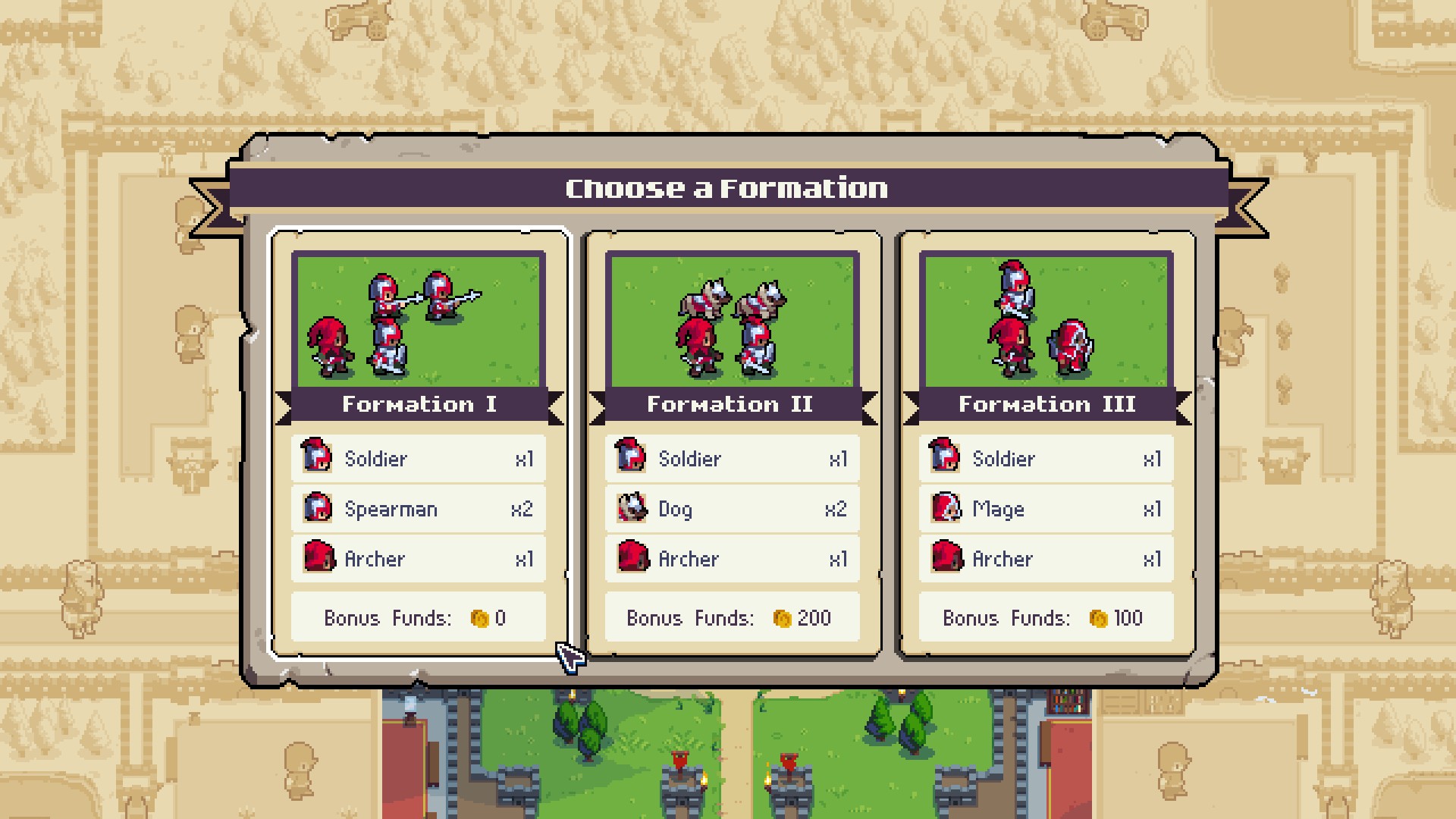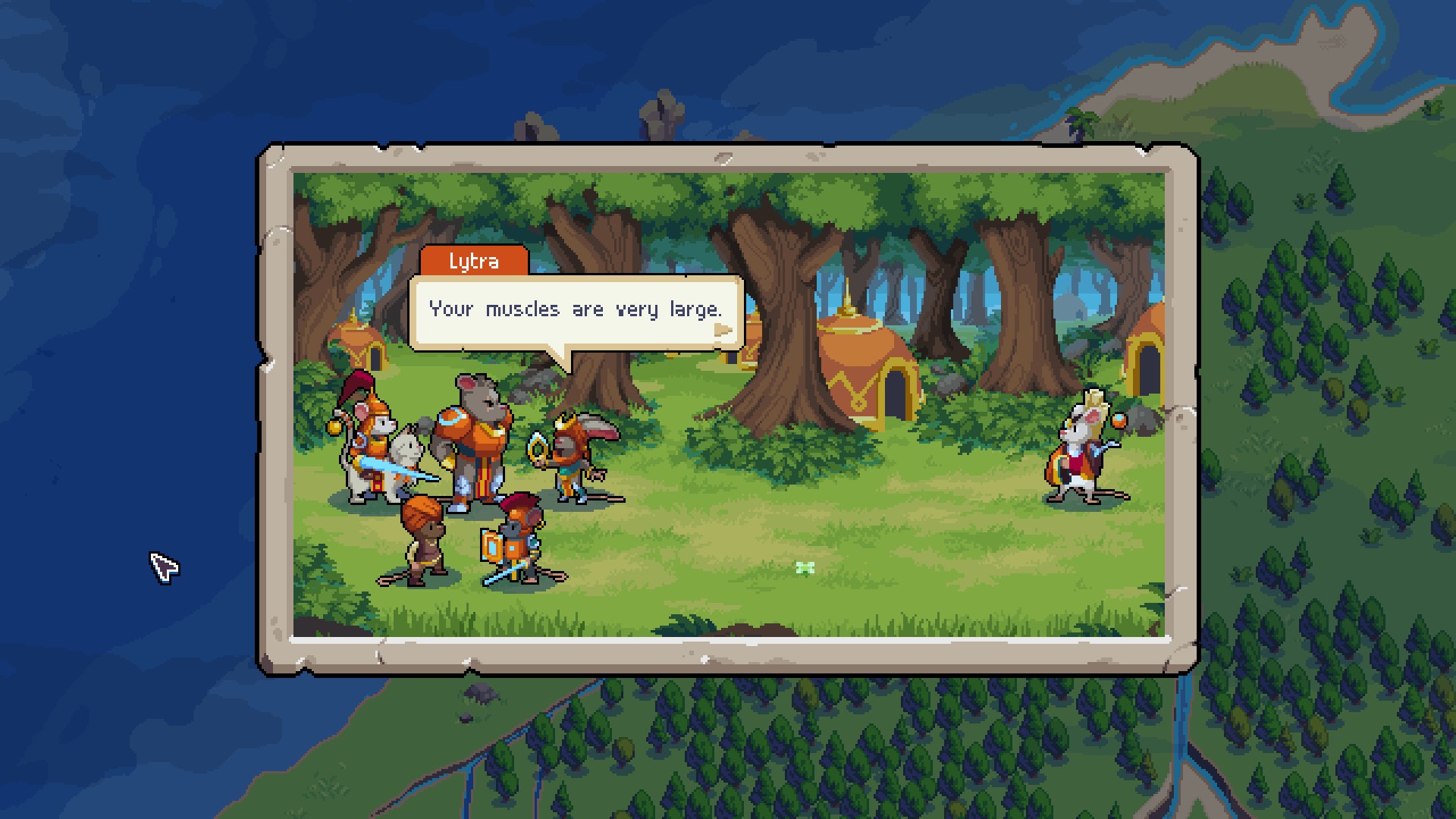Our Verdict
Bigger, better, more refined than its predecessor. Perhaps standing out a little less now, but with vast potential.
PC Gamer's got your back
What is it? Turn-based fantasy strategy inspired by Advance Wars
Release date October 5, 2023
Expect to pay $20/£16.75
Developer Chucklefish & Robotality
Publisher Chucklefish
Reviewed on Windows 11, Nvidia 4090, Intel i9-13900k, 64GB DDR5 RAM
Steam Deck Supported
Multiplayer? Local, Online, Co-op & PvP
Link Official Site
The original Wargroove came at just the right time. The world had been starved for more Advance Wars style strategy for years, and Chucklefish's cheery fantasy reimagining of War World's tanks n' choppers combat into knights and dragons hit the spot. Over four years later, Wargroove 2 arrives on the scene, and while this sequel is bigger and better than ever, it perhaps struggles to stand out against the recent Switch revival of the classic popcorn strategy series.
For newcomers, Wargroove was a turn-based, kid-friendly fantasy strategy game with a saturday morning cartoon vibe. Despite simple controls, comparatively short battles and stat-blocks on units being basic enough to internalize, there was real strategic depth, with enough hard and soft counters to make dramatic comebacks possible and heroic pushes against the odds. It was also almost mechanically near-identical to Intelligent Systems' classic Advance Wars.

Wargroove 2 is more of that. A lot more, although accessible to newcomers. The main story is set a couple years after the nearly-world-ending events of the original Wargroove, and split up into five campaigns. One prologue/tutorial, then an escalation through three separate (and increasingly challenging) stories focused on ground, air and naval combat respectively, and then culminating in a final stretch of missions that ties together all the mechanical and narrative threads the game has been building up to that point.
While the grand plot beats are mostly boilerplate fantasy, I was charmed by its cast of magical misfits evoking equal pathos and chuckles. While there's some darker moments, Wargroove 2 knows when to break angst with a joke, or cut the laughs short with a sharp twist. This is especially clear in the first campaign, which introduces the Faahri, a new faction of nerdy mouse-folk with little concept of war, venturing from their libraries across the sea on an armed research expedition. Nervous rookie protagonist Lytra is fun, and mad scientist Pistil gets some memorable moments, but the game extracts the most drama from Rhomb, a hulking pacifist (using they/them pronouns—romance here also happens regardless of gender) who grows increasingly distraught as conflict inevitably escalates.
There's a lot of game here, each campaign clocking in at 6-10 hours depending on how aggressively you take each mission, and if you have to retry fights. Difficulty, thankfully, is no major concern. While the game defaults to 'hard' mode (giving neither side any advantages), there's multiple difficulty settings and the option to set your own modifiers, so even complete strategy beginners can enjoy the ride. And it's a very fun ride, even if you're not riding the line challenge-wise.

The moment-to-moment strategy of Wargroove 2 is barely changed from its predecessor. Every unit and commander from the first game returns, with the largest addition being a handful of new unit types. Commanders now have a second level of 'groove' (their battle-swinging special ability, charged by having your troops do damage) and collectible items in the field that can heal your army or provide powerful battle-long buffs to non-commander units. But each addition is a multiplicative factor, opening up new strategies and scenarios to be explored.
The campaign explores those scenarios deeply, I'm happy to say. Almost every battle is mechanically or narratively interesting, continually introducing new units, structures, gameplay twists (like boss fights, fog of war, castles which flying units can't enter, or even puzzle stages that require you to find the perfect moves to clear all enemies in one turn) almost every mission, and seldom repeating the same trick twice. There's even some non-combat missions where you get to wander, talk to characters and make dialogue choices. While the campaign doesn't branch (something players can do in their own creations), it explores a lot of what's possible with the game's pieces, but not everything.

Diving deeper into the really fringe possibilities of Wargroove, Conquest mode is the big new feature—a roguelike-inspired mode separate from the campaign. Here, you start with a small handful of units and a single commander, and take on bite-sized battles against similarly sized enemy formations. The problem is that there's very few opportunities to purchase new units or even repair damaged ones, so every fight becomes a puzzle-like dance of maximizing damage while avoiding attrition, sometimes while dealing with poor unit match-ups, due to the randomly set scenarios.
It's interesting, clever, and fun, but also not why I enjoy Wargroove. It's one thing to lose a unit in the campaign, blunting an advance several turns later, but losing them and finding that they were exactly what I needed to counter an upcoming yet unknown threat sours the vibes a little for me. That said, this mode is expertly produced, and feels like a fresh way to interact with the game and its mechanics, with a suite of long-term progression mechanics to unlock new commanders and items. But I think I'll stick to the big battles and dramatic cartoon storytelling.
The good news for me is that the dramatic battling is likely to continue well past the expansive campaigns. While Wargroove 2 comes with plenty of dedicated maps to play skirmishes, co-op or multiplayer (local or online), it also sees the return of the first game's powerful editor, now with plenty more features and all the content from both games thrown into the mix.

The amount of scripting options inside and outside of missions had my head spinning. Players are free to create single encounters, or multi-mission campaigns with world maps, side missions, unlockable secrets, custom cutscenes and more, and then share it all online. I'm pretty sure that almost everything in the (impressively varied) campaign missions can be done here, and more besides.
Wargroove 2's final secret weapon is its cross-platform support. Sadly a feature I was unable to go hands-on with, but if it's anything like the first game's, expect full multiplayer and content sharing with all other versions of the game, console, handheld or otherwise. That includes asynchronous (play-by-email style) multiplayer and playing user-created maps and campaigns made elsewhere.
Perhaps the return of the king on Switch dulls some of the drama of this release, but this is still an excellent and accessible popcorn strategy game, and one that fits perfectly on Steam Deck. Far from being the 'We've got food at home' alternative, this is a proudly twice-crowned Burger King to Advance Wars' military McDonalds might.
Bigger, better, more refined than its predecessor. Perhaps standing out a little less now, but with vast potential.

The product of a wasted youth, wasted prime and getting into wasted middle age, Dominic Tarason is a freelance writer, occasional indie PR guy and professional techno-hermit seen in many strange corners of the internet and seldom in reality. Based deep in the Welsh hinterlands where no food delivery dares to go, videogames provide a gritty, realistic escape from the idyllic views and fresh country air. If you're looking for something new and potentially very weird to play, feel free to poke him on Bluesky. He's almost sociable, most of the time.


